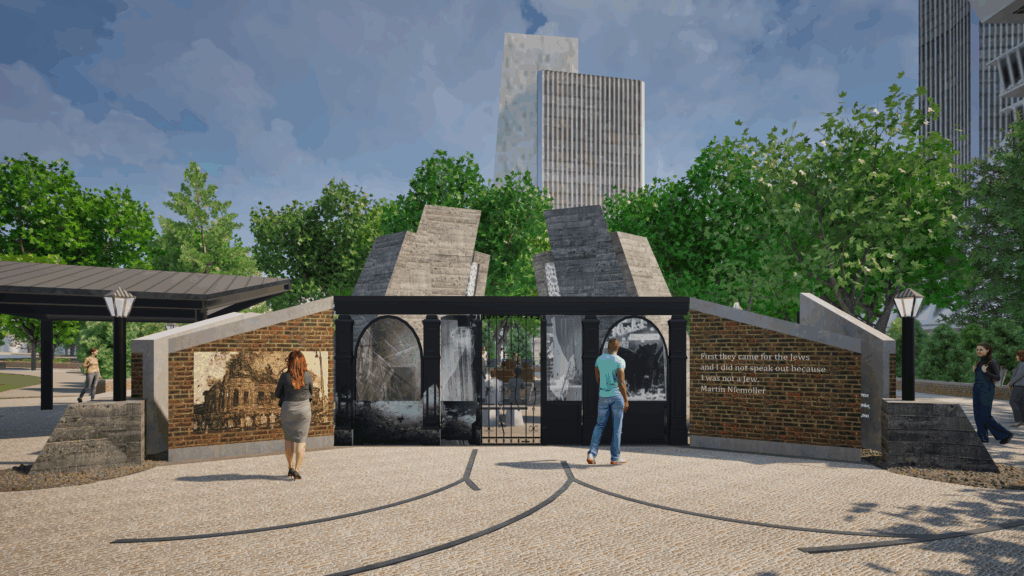The Capital District Jewish Holocaust Memorial is dedicated to building a permanent Memorial to the Holocaust in Albany, the capital of New York State in order to educate people about the Holocaust and its impact. We continue to work to create interactive experiential education for students and the general public and to connect people with the lessons of the Holocaust so they will not be forgotten.

We are making significant progress.
Our advocacy has led to two bills (S5784/A7614) being introduced in the Legislature that will require the Office of General Services to set aside land in the Governor Nelson A. Rockefeller Empire State Plaza for the purpose of building this Memorial. Should the legislation be adopted, the Capital District Holocaust Memorial (CDJHM) is poised and ready to work with the State of New York to see that the Memorial is built and the experiential education we are creating is integrated into the plan.
The design of the memorial was developed by Dembling and Dembling Architects P.C. and Adirondack Studios, whose leaders engaged in a collaborative effort with both the CDJHM and the Jewish Federation of Northeastern New York. The educational component is being developed by the CDJHM in partnership with the Jewish Federation, the Anti-Defamation League, and local educational institutions.
The Memorial will be augmented with an ongoing educational program intended to be presented in local schools, and at community programs and events. Upon completion of educational programs and visits to the memorial, students and participants will be able to:
© Copyright 2025 CDJHM. All Rights Reserved.